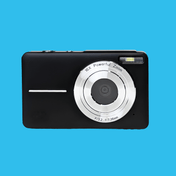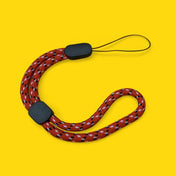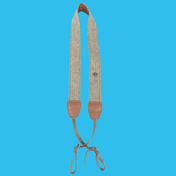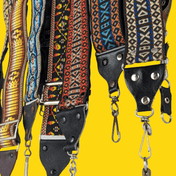
Light is responsible for every image captured in photography. How a camera captures light is decided by three variables that make up what is known as the exposure triangle.
What is the exposure triangle?
How can these three settings be used to capture an image? In this how-to blog, we will understand the three variables that create the exposure of an image. We’ll also take a look at an exposure triangle chart that you can save as a reference to create the photos you are looking for.
The exposure triangle is a set of 3 settings that determine your final image. These settings consist of Aperture, ISO, and Shutter Speed.
- Aperture is how much light you want to enter the camera
- ISO in film photography is set by the film speed and can't be changed.
- Shutter speed determines how fast light enters the camera.
Each variable also affects other qualities of an image. Depth of field, motion blur, and noise are all determined by elements of exposure triangle photography.

Aperture
The literal definition of aperture means “opening” or “hole.” The aperture of a camera lens is a hole that regulates how much light passes through to the film or sensor.
When the shutter button of a camera is hit, the aperture opens up to a predetermined width and lets in a specific amount of light. Aperture works with ISO and shutter speed to control exposure. Above you can see an image of a simplified exposure triangle cheat sheet. This shows you how the aperture affects the depth of field but also how much light is coming through the camera lens.

As you can see from the exposure triangle chart, the width of a camera lens’ aperture is measured in f/stops written in numbers like 1.4, 2, 2.8, 4, 5.6, 8, 11, and 16.
The bigger the number the smaller the hole/opening. So F16 would let in very little light. Aperture doesn't just affect the lighting. It also affects the depth of field. This means that it determines what stays in focus for your subject. Say if you had your camera set to f/1.4 this would give you a shallow depth of field which blurs the background. F/16 would give you a deeper depth of field and therefore a wider range of focus.
Shutter speed
When the shutter button of a camera is pressed, the aperture opens up. How long the aperture stays open is determined by the camera’s shutter speed. Shutter speed controls how long the sensor of the camera is exposed to light.
Shutter speed is measured in fractions of a second. For example, a shutter speed of 1/60 holds the shutter open for one-sixtieth of one second. The longer the shutter speed is in time the more light is let in. If it is shorter in time, less light is let in.

Like all the other elements of the exposure triangle, shutter speed does not only affect exposure but other visual elements as well. For shutter speed, motion blur is affected. When shooting with limited light, you may think it would be a good idea to adjust your shutter speed to let in light longer. So, you set it at a 1/20.
The downside of a longer shutter speed like 1/20, is that motion blur becomes much more prominent when you are either capturing a moving subject or the camera itself is moving. This is where a Tripod is handy or adjusting your other settings in the exposure triangle to adapt to this.
The image above shows motion blur adding to the image, motion blur can happen and cause happy accidents too!
ISO/ASA
ISO refers to a specific film stock’s sensitivity to light. With newer technology such as automatic SLRs, you can determine the ISO using the camera’s sensor. You can adjust its ISO and sensitivity to light depending on the available light of a shot.
ISO is measured in ISO values such as 50, 100, 200, 400, 800, 1600, 3200, etc.
In a film camera, the ISO stock ranges from 100-1600 depending on your film size.
A lower ISO value such as 100 makes the film less sensitive. A higher ISO value such as 1600 makes the film more sensitive to light.
Increasing your ISO to brighten up your shot does come at a cost. That cost is image noise. However, as a film photographer, you can experiment with this, the method is called Push and Pull where you can underexpose your shot and then over-develop it to get a unique image.
Image noise is a random variation in colour information within an image. Noise causes textural and visual changes in a shot that, when present in large amounts, can appear low quality and unprofessional.
Within analog photography, however, some people have experimented with fast film speeds like 1000 to imitate the effect of film grain which can add texture and energy to a shot. This grain/noise is appreciated within film photography as it gives you a different, exciting nuance to your photos that you just won't get in digital photography or through your phone.
Exposing your photo to too much light
There are pros and cons when shooting in an environment with a lot of light, such as a midday, exterior shot. The benefit would be that you can shoot with a lower speed film stock like 100-200 allowing for minimal image noise and sharp crisp image.
However, to avoid overexposure in your shot, you’ll need to adjust either your aperture, shutter speed, or both. If you are shooting a still photo, you may want to begin by shooting at a faster shutter speed to cut down the amount of light coming into the camera.
This will allow you to control the light without compromising your desired aperture and depth of field.
With film photography, it is all about experimenting and changing your settings to better learn what works with what lighting. If you think that your photo may still be overexposed start closing down your aperture to something larger like f/16. While this will affect your depth of field, it will help to properly expose your shot. Remember there is always post-production where you can underexpose a shot when developing your film or printing.
If the shot is still overexposed given the harsh sunlight, an ND filter could also help you to cut down light without adjusting the aperture. This will allow you to shoot at a wider aperture without overexposing. Filters are a great add-on for when you experience harsh lighting or want to experiment with settings.
Exposing your image with low lighting
On the other side of the lighting spectrum, is shooting with a limited amount of light. This could be the case when shooting at night, within closed interior locations, or shooting without much lighting equipment.
To avoid an underexposed shot, you’ll need to find a balance of all 3 light exposure settings that will expose your shot while also letting you get the perfect photo. The exposure triangle diagram is a great reference to use when determining what settings will allow more light in and what side effects it would entail. If you know you will be shooting at night a good rule of thumb is to use a faster film stock of around 400-800 and use an external flash. Aperture is going to give you the most help here with having at least f/2.8 would help as much light as possible get into your camera. A slower shutter speed will also help but as long as it is synced with your flash you should get some brighter imaging.
To learn in-depth about how these 3 settings affect your photography follow our regular blog updates and our social media pages for updates on new upcoming cameras and gear.












